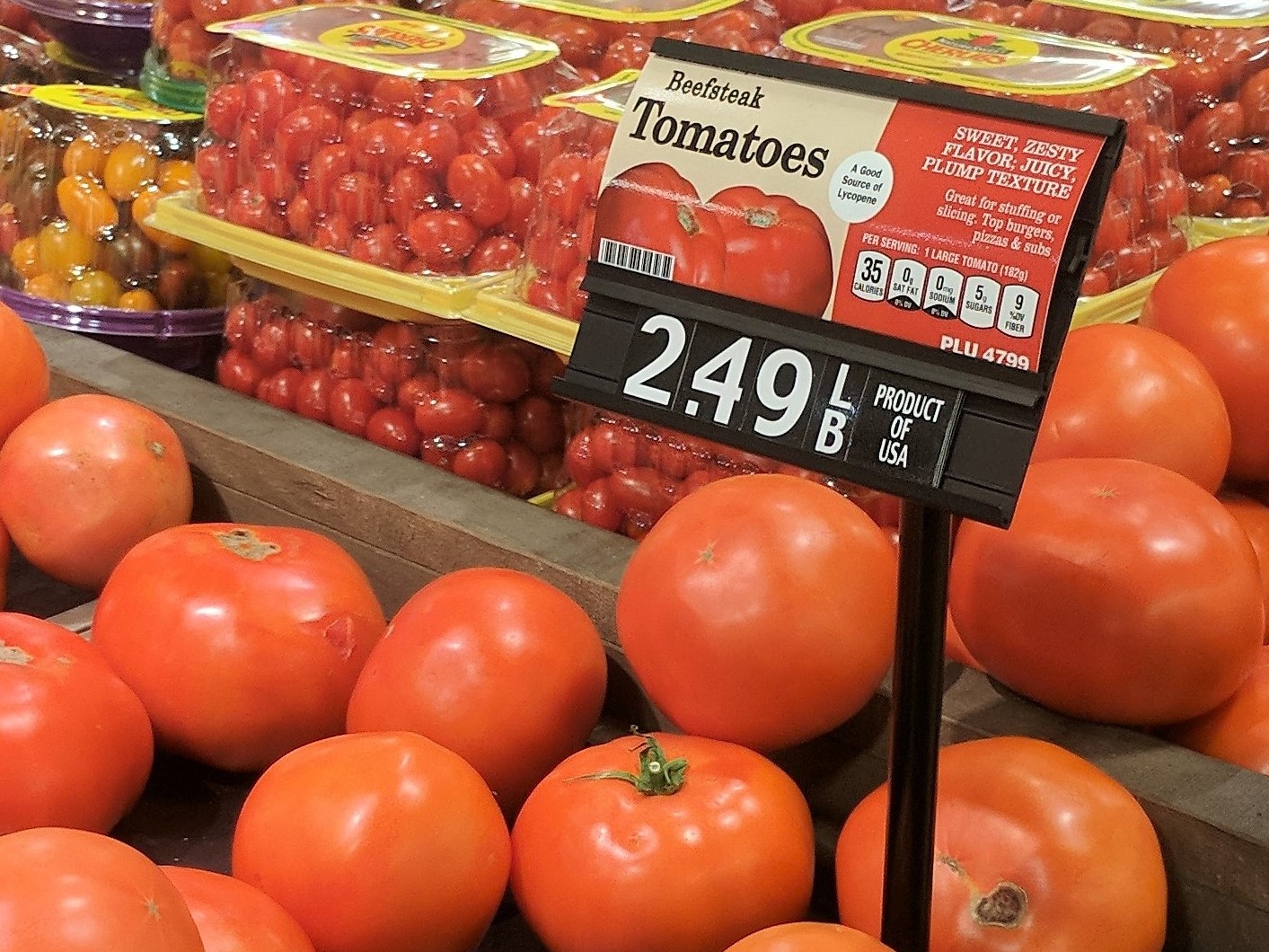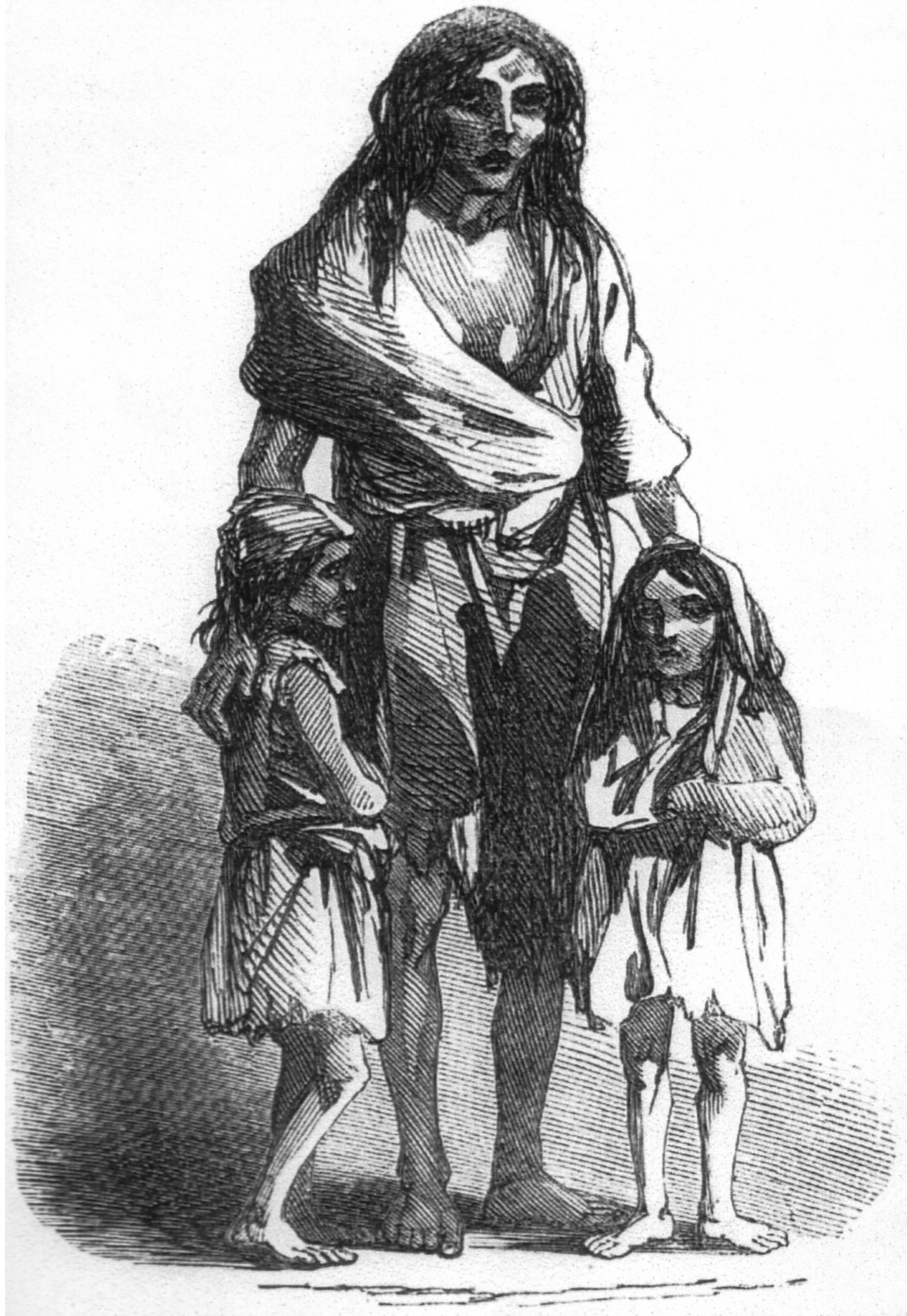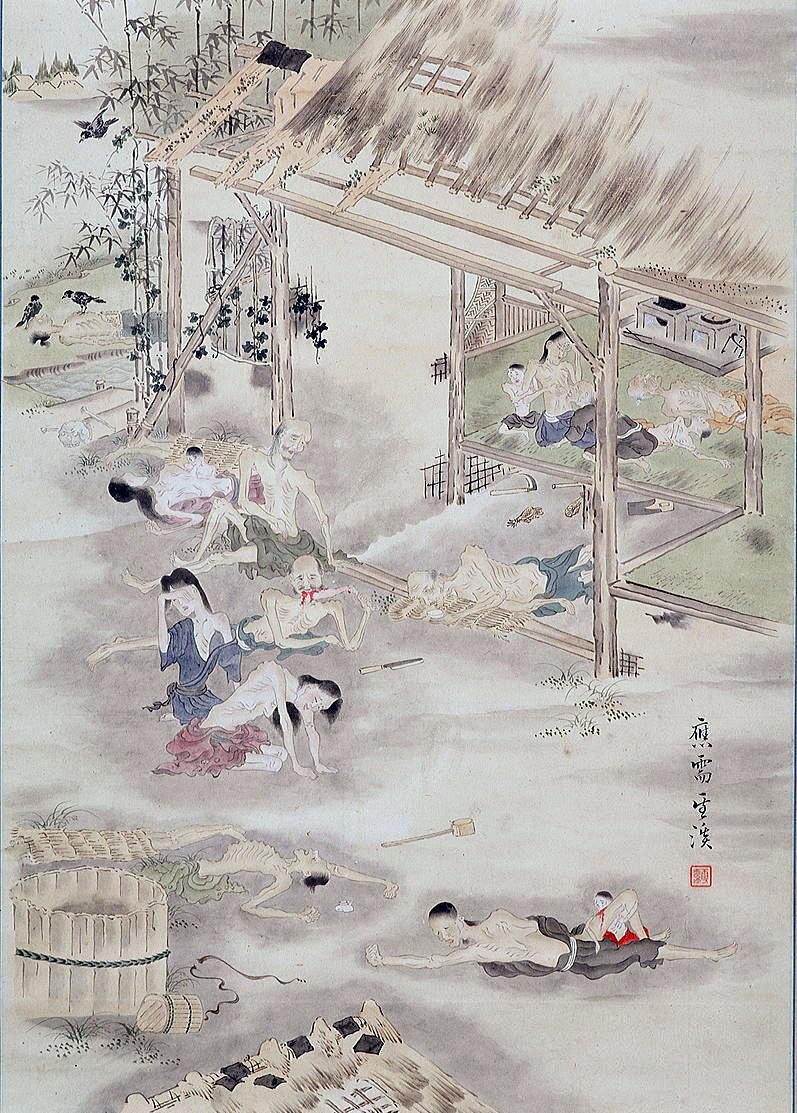|
Yōwa Famine
The Yōwa famine (養和の飢饉, ''Yōwa no kikin''), was a famine which affected Japan at the end of Heian period. Famine is considered to have begun in 1181, and lasted until 1182. It was named after the Yōwa era (1181–1182), during the reign of Emperor Antoku. The shogunate system was not established in Japan yet. The famine was most severe in western Honshū (including Kyoto) and Kyushu islands. The famine was caused by an alternating, untimely drought and flood. During the same period as the famine, there was also the Genpei War (1180-1185), partially caused by famine itself. In 1181, the Taira clan food requisitions in Yamashiro Province for the needs of starving Kyoto city have cost them popular support, while Minamoto no Yoritomo supplied rice for the starving provinces in exchange for grants for independent rule in Kamakura. The famine become worse in 1182, as epidemic was superimposed on scarcity of food. The food prices rose to such levels, what man's load ... [...More Info...] [...Related Items...] OR: [Wikipedia] [Google] [Baidu] |
Famine
A famine is a widespread scarcity of food, caused by several factors including war, natural disasters, crop failure, Demographic trap, population imbalance, widespread poverty, an Financial crisis, economic catastrophe or government policies. This phenomenon is usually accompanied or followed by regional malnutrition, starvation, epidemic, and increased death, mortality. Every inhabited continent in the world has experienced a period of famine throughout history. In the 19th and 20th century, generally characterized Southeast and South Asia, as well as Eastern and Central Europe, in terms of having suffered most number of deaths from famine. The numbers dying from famine began to fall sharply from the 2000s. Since 2010, Africa has been the most affected continent of famine in the world. Definitions According to the United Nations World Food Programme, famine is declared when malnutrition is widespread, and when people have started dying of starvation through lack of access to suf ... [...More Info...] [...Related Items...] OR: [Wikipedia] [Google] [Baidu] |
Food Prices
Food prices refer to the average price level for food across countries, regions and on a global scale. Food prices have an impact on producers and consumers of food. Price levels depend on the food production process, including food marketing and food distribution. Fluctuation in food prices is determined by a number of compounding factors. Geopolitical events, global demand, exchange rates, government policy, diseases and crop yield, energy costs, availability of natural resources for agriculture, food speculation, changes in the use of soil and weather events have a direct impact on the increase or decrease of food prices. The consequences of food price fluctuation are multiple. Increases in food prices, or agflation, endangers food security, particularly for developing countries, and can cause social unrest. Increases in food prices is related to disparities in diet quality and health, particularly among vulnerable populations, such as women and children. Food prices will o ... [...More Info...] [...Related Items...] OR: [Wikipedia] [Google] [Baidu] |
1181 In Asia
Year 1181 ( MCLXXXI) was a common year starting on Thursday (link will display the full calendar) of the Julian calendar. Events By place Europe * King Philip II (Augustus) annuls all loans made by Jews to Christians, and takes a percentage for himself. A year later, he confiscates all Jewish property and expels the Jews from Paris. * Philip II begins a war against Philip of Alsace, count of Flanders, over the Vermandois. He claims the territory for his wife Isabella of Hainault as her dowry. Philip is unwilling to give it up. * Henry the Lion, duke of Saxony, submits to Emperor Frederick I (Barbarossa) at an Imperial Diet in Erfurt. He is banished to England and retains only Brunswick among his former lands. * King Béla III of Hungary and Croatia goes to war with Venice in an effort to recover Dalmatia. The city of Zadar (located on the Adriatic Sea) accepts Béla's suzerainty. * After a series of defeats, the Almohad fleet under the admiral Ahmad al-Siqilli, crushe ... [...More Info...] [...Related Items...] OR: [Wikipedia] [Google] [Baidu] |
1180s In Japan , synthetic chemical element with atomic number 118
{{Numberdis ...
118 may refer to: *118 (number) *AD 118 *118 BC *118 (TV series) *118 (film) *118 (Tees) Corps Engineer Regiment *118 (Tees) Field Squadron, Royal Engineers See also *11/8 (other) *Oganesson Oganesson is a synthetic chemical element with the symbol Og and atomic number 118. It was first synthesized in 2002 at the Joint Institute for Nuclear Research (JINR) in Dubna, near Moscow, Russia, by a joint team of Russian and American scient ... [...More Info...] [...Related Items...] OR: [Wikipedia] [Google] [Baidu] |
Natural Disasters In Japan
Japan is the country that is most affected by natural disasters mainly due to it being in the Ring of Fire. Two out of the five most expensive natural disasters in recent history have occurred in Japan, in 1995 and 2011, costing $181 billion. Japan has also been the site of some of the 10 worst natural disasters of the 21st century. Many types of natural disasters occur in Japan such as tsunamis, floods, typhoons, earthquakes, cyclones, and even volcanic eruptions. The country has gone through thousands of years of natural disasters, affecting its economy, development, and social life. Some other major disasters in Japan were more recent, such as the January 1995 Great Hanshin earthquake and the March 2011 Tōhoku earthquake and tsunami, which triggered the Fukushima Daiichi nuclear disaster. Volcanic eruptions Many volcanic eruptions have taken place in Japan. List of major volcanic eruptions VEI-7 Volcanic eruptions There are three VEI-7 volcanoes in Japan. These are the ... [...More Info...] [...Related Items...] OR: [Wikipedia] [Google] [Baidu] |
Famines In Japan
A famine is a widespread scarcity of food, caused by several factors including war, natural disasters, crop failure, population imbalance, widespread poverty, an economic catastrophe or government policies. This phenomenon is usually accompanied or followed by regional malnutrition, starvation, epidemic, and increased mortality. Every inhabited continent in the world has experienced a period of famine throughout history. In the 19th and 20th century, generally characterized Southeast and South Asia, as well as Eastern and Central Europe, in terms of having suffered most number of deaths from famine. The numbers dying from famine began to fall sharply from the 2000s. Since 2010, Africa has been the most affected continent of famine in the world. Definitions According to the United Nations World Food Programme, famine is declared when malnutrition is widespread, and when people have started dying of starvation through lack of access to sufficient, nutritious food. The Integrated ... [...More Info...] [...Related Items...] OR: [Wikipedia] [Google] [Baidu] |
List Of Famines
This is a list of famines. List See also Main article lists * Bengal famine * Droughts and famines in Russia and the Soviet Union * Famine in India * Famines in Czechia * Famines in Ethiopia * Great Bengal famine of 1770 * Great Famine of 1876–1878 * Great Chinese Famine * Holodomor * Khmer Rouge * List of famines in China * North Korean famine * Timeline of major famines in India during British rule Other articles * 2007–2008 world food price crisis * Disaster * Famine Early Warning Systems Network * Famine events * Famine relief * Famine scales * Food security * List of natural disasters by death toll * List of wars and anthropogenic disasters by death toll * Live Aid * Medieval demography * Population decline * Potato famine * Starvation * Theories of famines * World population References Bibliography * * * * External links {{Disasters * Famines Famines Famine A famine is a widespread scarcity of food, caused by several factors ... [...More Info...] [...Related Items...] OR: [Wikipedia] [Google] [Baidu] |
Kanshō Famine
The Kanshō famine (長禄・寛正の飢饉, Chōroku-kanshō no kikin), was a famine which affected mostly western Japan from 1459 to 1461 (or Chōroku-3 to Kanshō-2, in the Japanese calendar.), during the reign of Emperor Go-Hanazono in the Muromachi period. The ruling shōgun during the famine was Ashikaga Yoshimasa. The number of deaths from starvation was at least 82,000. Causes The ongoing conflict in the Kantō region following Kyōtoku Incident in 1454, plus general incompetence in the administration of Ashikaga Yoshimasa leading up to the Ōnin War contributed to poor agricultural production and a sluggish response to the famine, greatly increasing its death toll. Famine A general drought in Japan began in March 1459. It ended in September 1459 with a severe typhoon, flooding the Kamo River and causing major damage. Rare astronomical phenomena were reported, including sun dogs and a meteor colliding with the moon, possibly connected to the Little Ice Age. Taking an oppo ... [...More Info...] [...Related Items...] OR: [Wikipedia] [Google] [Baidu] |
Kan'ei Great Famine
The Kan'ei Great Famine ( ') was a famine which affected Japan during the reign of Empress Meishō in the Edo period. The estimated number of deaths due to starvation is between 50,000 and 100,000. The famine is generally considered to have begun in 1640 and lasted into 1643. It was named after the Kan'ei era (1624–1644). The ruling ''shōgun'' during the famine was Tokugawa Iemitsu. Events leading to the famine Due to large numbers of internally displaced persons in the aftermath of the Shimabara Rebellion, and the rinderpest epizooty, which broke out in Kyushu in 1638 and was impossible to contain, led to mass deaths of cattle in Western Japan, which reduced agricultural productivity in 1640 due to the scarcity of working animals. Also, motivation among farmers was weakening due to the extreme impoverishment of low-ranking samurai class members. The increased spending after the 1635 reformation of Sankin-kōtai (increasing frequency of ''daimyō'' annual trips to Edo) did not ... [...More Info...] [...Related Items...] OR: [Wikipedia] [Google] [Baidu] |
Great Tenmei Famine
The Great Tenmei famine (天明の大飢饉, ''Tenmei no daikikin'') was a famine which affected Japan during the Edo period. It is considered to have begun in 1782, and lasted until 1788. It was named after the Tenmei era (1781–1789), during the reign of Emperor Kōkaku. The ruling ''shoguns'' during the famine were Tokugawa Ieharu and Tokugawa Ienari. The famine was the deadliest one during the early modern period in Japan. Causes The 1783 eruption of Mount Asama is said to have caused the Great Tenmei famine. Starting in the 1770s, there was a sharp decline in crop yield in Tōhoku, which is the north-eastern region of Honshū, due to poor and cold weather, so food stocks in rural areas were exhausted. The situation was exacerbated by natural disasters: Mount Iwaki erupted on April 13, 1783 (3rd month, 12th day, in the year Tenmei-3, according to the Japanese calendar), as did Mount Asama on July 6, so volcanic ash was sent down into the atmosphere of Japan. Aside from th ... [...More Info...] [...Related Items...] OR: [Wikipedia] [Google] [Baidu] |




